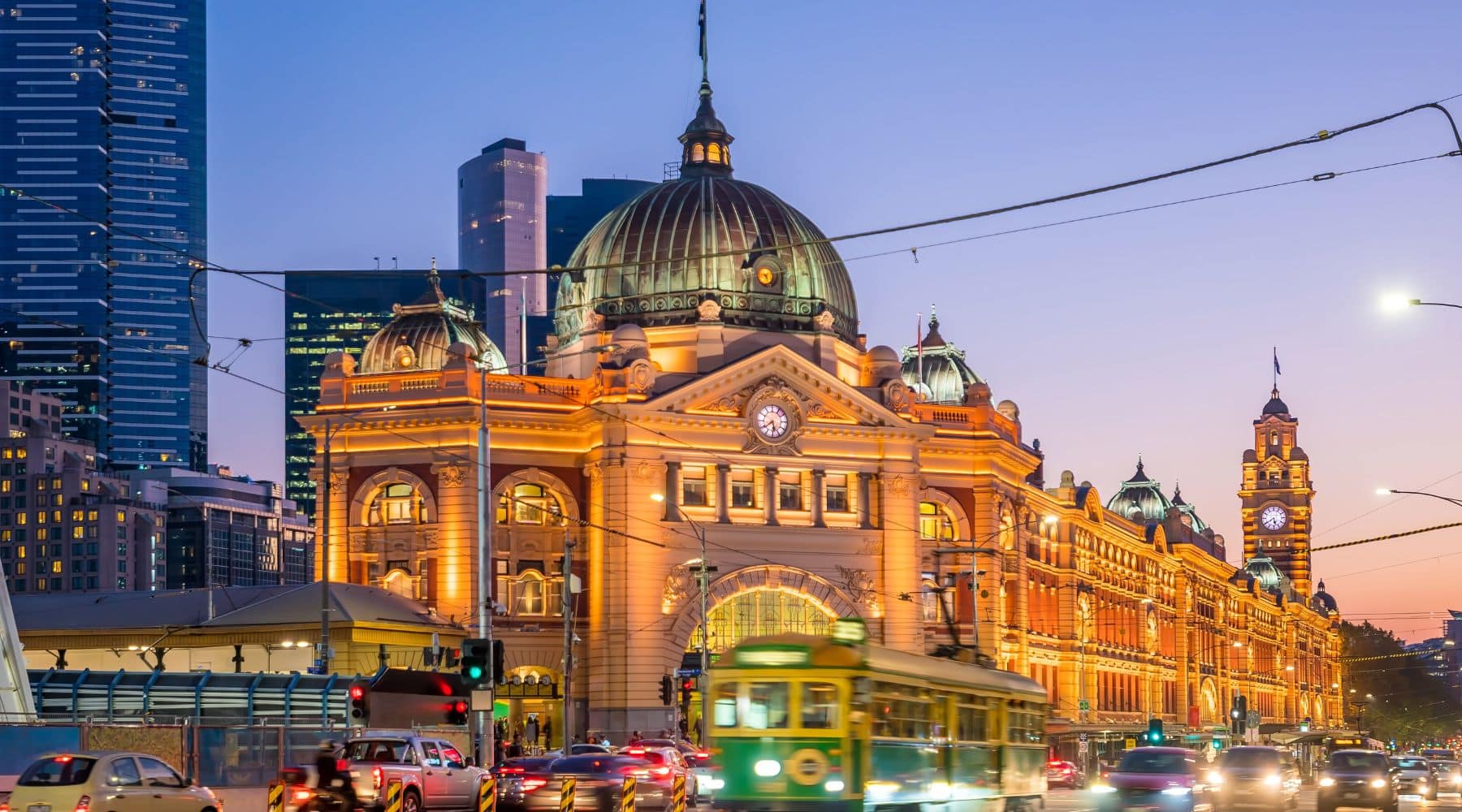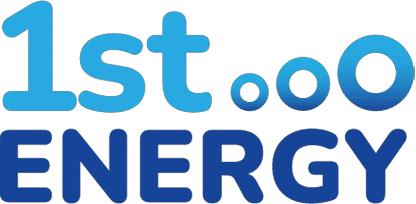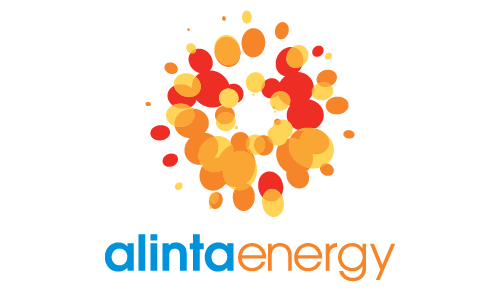Victoria’s energy market offers a range of options for both electricity and gas, but prices and plans can vary significantly. Knowing how the system works and what choices are available can help you take control of your bills and find a plan that suits your needs.
How does the Victorian energy system work?
Victoria has a deregulated energy market, which means you’re free to choose both your electricity and gas providers instead of being limited to a single supplier.
Retailers set their own prices and offer a range of plans with different rates, discounts and incentives. This competition helps keep costs down and gives Victoria residents more options to choose from, allowing them to shop around, compare energy plans and switch providers at any time.
Most households buy directly from an energy retailer, but some – such as those in apartment buildings, retirement villages or caravan parks – may be on an embedded network, where electricity is supplied through a shared private system. While you may still have the option to switch retailers, the process can be more complicated than standard connections.
Types of energy plans
How to compare electricity in VIC
How electricity plans work in Victoria
Electricity prices in Victoria are regulated by the Essential Services Commission (ESC), which sets a default price called the Victorian Default Offer (VDO).
This default price forms the basis of what’s called the standing offer, which is the standard plan available if you don’t choose a market deal. The VDO is updated annually and acts as a benchmark to ensure customers who haven’t chosen a plan still pay a fair and reasonable price for their electricity.
However, in Victoria you’re free to choose from a variety of market offers provided by competing electricity retailers. These plans can offer better rates, discounts and incentives that may better suit your household’s needs and budget. However, it’s important to regularly review these plans to make sure you’re still getting a good deal that fits your circumstances.
Different types of electricity tariffs
Your tariff is the pricing structure that determines how much you pay for your electricity based on when and how you use it.
In 2008, the Victorian Government mandated the rollout of smart meters, which was completed by 2014. Almost all Victorian households now have smart meters, allowing access to a greater variety of tariffs. These include:
- Flat (single) rate: you pay a fixed rate for electricity regardless of the time of day you use it.
- Time-of-use: charges vary depending on when you use electricity.
- Demand tariff: you are charged based on your highest peak electricity usage during the billing period.
- Controlled load: applies to specific appliances, such as electric hot water systems, which run on a separate, lower-cost tariff controlled by your energy provider.
Can you change your tariff?
Changing your electricity tariff depends primarily on your distributor’s policies. You’ll need to apply through your retailer, but the distributor ultimately decides if the change is possible. On top of this, switching tariffs may involve fees, and you can usually only change your tariff once every 12 months.
Solar power in Victoria
Around 30% of Victorian homes now have solar panels, a number that continues to grow thanks to government incentives aimed at making renewable energy more accessible and affordable.
The Solar Homes Program, for example, supports households through rebates and interest-free loans for solar panel installations, solar hot water systems and battery storage.
Victorian households with solar panels can also benefit from feed-in tariffs, which pay you for excess electricity your system exports back to the grid. As of November 2025, feed-in tariff rates in Victoria can be up to 10 cents per kWh, depending on your electricity retailer.
Cheapest electricity plans in VIC
In Melbourne, the cheapest electricity plan available through Savvy is around 22% lower than the VDO as of November 2025.
| Retailer | Plan | Estimated monthly cost | Estimated annual cost |
|---|---|---|---|
| Ovo Energy | The Free 3 Plan | $102 | $1,200 |
| ENGIE | ENGIE Perks | $104 | $1,220 |
| Momentum Energy | Warm Welcome | $111 | $1,300 |
| Lumo Energy | Lumo Plus | $112 | $1,308 |
| Alinta Energy | HomeDeal Select | $112 | $1,314 |
| EnergyAustralia | Power 365 | $112 | $1,314 |
| Red Energy | Red Living Energy Saver | $117 | $1,368 |
| 1st Energy | 1st Saver | $118 | $1,378 |
| AGL | Smart Saver | $119 | $1,392 |
| Arcline by RACV | Home Energy Plan | $123 | $1,438 |
| Source: Econnex, November 2025 Costs based on average daily usage of 10.96 kWh for a household in Melbourne. |
|||
Electricity providers in VIC
Electricity in Victoria is delivered through two key players:
Distributors: distributors manage the physical infrastructure like poles, wires and meters that bring electricity to your home. Your distributor is fixed based on your location and cannot be changed.
Retailers: your retailer is the company you buy electricity from, which also handles things like billing and customer service. Unlike distributors, in Victoria you can choose or switch retailers to find a plan that suits.
Electricity distributors in Victoria
Five electricity distributors serve Victoria, each covering a different area of the state:
- AusNet Services: covers the outer northern and eastern suburbs of Melbourne and eastern and north-eastern Victoria.
- Citipower: serves Melbourne’s city centre and inner suburbs.
- Jemena: distributes to north-west Melbourne.
- Powercor Australia: covers Melbourne’s western suburbs and central and western Victoria.
- United Energy Distribution: distributes to Melbourne’s south-eastern suburbs and the Mornington Peninsula.
Electricity retailers in Victoria
Depending on where you live in Victoria, you may have the choice of the following electricity retailers:
- 1st Energy
- AGL
- Alinta Energy
- Amber Electric
- Arcline by RACV
- Blue NRG
- CovaU Energy
- Diamond Energy
- Dodo Power and Gas
- Energy Locals
- EnergyAustralia
- ENGIE
- Flow Power
- GloBird Energy
- Kogan Energy
- Lumo Energy
- Momentum Energy
- Nectr
- Origin Energy
- OVO Energy
- Pacific Blue
- Powershop
- Red Energy
- Sumo
- Tango Energy
What is the average electricity bill in VIC?
How much you’ll pay for electricity depends on a range of factors like household size, energy use, time of year and your retailer and plan.
Based on the VDO, we calculated that the average electricity bill for a three-person household consuming around 5,000 kWh is about $1,675 in Victoria – roughly $140 per month. This is lower than the national average, which sits at approximately $1,994 per year.
If your bill is higher than this but your household uses less electricity, it could mean you’re on a more expensive plan and there might be better options available for you.
How to compare gas in VIC
How gas plans work in Victoria
Unlike electricity, gas prices in Victoria are not regulated by a benchmark price like the VDO. Instead, gas retailers can set their prices freely, which means there is less consumer price protection. However, households connected to mains gas have access to a wide range of gas plans they can compare by looking at usage, supply charges and any discounts or incentives offered by gas retailers, which can help to keep costs down.
Types of gas tariffs
Gas plans are usually single-rate tariffs, where you pay a flat rate for all your energy used, or block-rate. Block-rate tariffs are based on blocks of usage, with one rate for the first portion of gas used and a different rate for the next block.
Additionally, many gas plans in Victoria have seasonal rates, where prices are higher during peak usage times like winter and lower during off-peak seasons.
The future of gas in Victoria
Victorian households have the highest gas usage in Australia, with around 88% of homes using some form of gas power.
However, the Victorian Government banned new gas connections for new homes and subdivisions requiring a planning permit starting 1 January 2024. From 1 January 2027, the ban will extend to most new residential and commercial buildings. Its Gas Substitution Roadmap outlines a plan to transition homes away from gas toward full electrification over time, aiming to reduce emissions, tackle supply challenges and lower energy bills.
Cheapest gas plans in VIC
The following table shows the cheapest gas plans available in Melbourne as of November 2025.
| Retailer | Plan | Estimated monthly cost | Estimated annual cost |
|---|---|---|---|
| Momentum Energy | Warm Welcome | $110 | $1,289 |
| Alinta Energy | HomeDeal Essential | $111 | $1,296 |
| EnergyAustralia | Power 365 | $120 | $1,412 |
| Red Energy | Red Living Energy Saver | $121 | $1,422 |
| AGL | Smart Saver | $122 | $1,433 |
| Lumo Energy | Lumo Plus | $123 | $1,445 |
| Arcline by RACV | Home Energy Plan | $124 | $1,450 |
| ENGIE | ENGIE Perks | $125 | $1,462 |
| 1st Energy | 1st Saver Plus | $142 | $1,669 |
| Source: Econnex, November 2025 Costs based on average daily usage of 83.33 MJ for a household in Melbourne. |
|||
Gas providers in VIC
Gas distributors in Victoria
There are three gas distributors in Victoria, each serving a different region of the state:
- Australian Gas Networks: serves the northern, outer eastern and southern areas of Melbourne, Mornington Peninsula, rural communities in northern, eastern and north-eastern Victoria, and south-eastern rural townships in Gippsland. It also serves the city of Albury and around, extending to Jindera to the north of Albury.
- Multinet Gas: serves customers throughout the south and east areas of metropolitan Melbourne, Yarra Ranges and South Gippsland Towns.
- AusNet Services: serves customers across central and western Victoria.
Gas retailers in Victoria
Depending on where you live in Victoria, you may have the choice of the following gas retailers:
- 1st Energy
- AGL
- Alinta Energy
- Arcline by RACV
- CovaU Energy
- Dodo Power and Gas
- Energy Locals
- EnergyAustralia
- ENGIE
- GloBird Energy
- Kogan Energy (with electricity plan only)
- Lumo Energy
- Momentum Energy
- Origin Energy
- Powershop
- Red Energy
- Sumo
- Tango Energy
Why compare energy plans through Savvy?
100% free to use
You won't need to pay a cent to compare a variety of energy plans online through Savvy. It's 100% free.
Simple online quotes
By filling out your form and providing a recent energy bill, you can have all the facts and figures worked out for you.
Choice of leading providers
When you fill out your quote, you'll be able to consider offers from some of the leading energy providers in Australia.
Tips for comparing energy in VIC
-
Understand your energy usage
Check your recent bills to see how much and when you use energy so you can pick a plan that fits your needs.
-
Compare supply charges and usage rates
Look at both the daily supply fee and the cost per kWh to get the full picture of costs.
-
Don’t assume dual fuel is cheapest
Introductory discounts reduce your bill in the short term, but always check the standard rates that apply once these discounts end to avoid unexpected price increases.
-
Look at discounts – and the full cost
Discounts can help, but always consider the total cost, as plans with smaller discounts could still cost less overall.
-
Review your plan regularly
Reviewing your plan annually or when your contract ends helps you stay on the best deal for your needs and avoid overpaying.
VIC energy rebates and concessions
Victorian residents have access to a wide range of rebates, discounts and support to help reduce their energy bills.
Energy concessions
If you are on a low income and/or a concession card holder, the Victorian Government has a number of concessions to help residents cover their energy bills.
| Energy concession | Purpose | Concession amount | Eligibility |
|---|---|---|---|
| $100 Power Saving Bonus | A one-off payment available from 25 August 2025 to help households to help with energy costs | $100 Note: Previous rounds of the program offered up to $250 per round to eligible Victorian households. These rounds are now closed. |
Health Care Card Pensioner Concession Card Veterans’ Affairs Pensioner Concession Card Veterans’ Affairs Gold Card |
| Annual electricity concession | Money off mains electricity usage and service costs | 17.5% of electricity usage and service costs Does not apply to the first $171.60 of the annual bill |
Pensioner Concession Card Health Care Card Veterans’ Affairs Gold Card |
| Excess electricity concession | Money off annual mains electricity usage and service costs above $3,895.13 | 17.5% of electricity usage and service costs | Annual electricity costs above $3,895.13 Pensioner Concession Card Health Care Card Veterans’ Affairs Gold Card |
| Winter gas concession | Money off mains gas usage and service costs between 1 May and 31 October each year | 17.5% of gas usage and service costs Does not apply to the first $62.40 of the six-month bill period |
Pensioner Concession Card Health Care Card Veterans' Affairs Gold Card |
| Excess gas concession | Money off mains gas usage and service costs above $2,499.14 from 1 May to 31 October | 17.5% of gas usage and service costs | Winter gas costs above $2,499.14 Pensioner Concession Card Health Care Card Veterans’ Affairs Gold Card |
| Life support concession (electricity) | Money off for households using mains electricity to run intermittent peritoneal dialysis machines (electricity), oxygen concentrators (electricity) and/or haemodialysis machines (electricity and water) | The cost of 1,880 kilowatt hours (470 kilowatt hours per quarter) of electricity each year | Pensioner Concession Card Health Care Card Veterans’ Affairs Gold Card Uses/has a household member who uses an eligible life support machine |
| Non-mains life support concession | A rebate for households in embedded networks running intermittent peritoneal dialysis machines (electricity), oxygen concentrators (electricity) and/or haemodialysis machines (electricity and water). | $389 electricity rebate (2025–26) | Pensioner Concession Card Health Care Card Veterans’ Affairs Gold Card Uses/has a household member who uses an eligible life support machine |
| Medical cooling concession | Money off electricity bills related to medically-required cooling between 1 November and 30 April | 17.5% of electricity usage and service costs between 1 November and 30 April | Pensioner Concession Card Health Care Card Veterans’ Affairs Gold Card Has/a household member has a medical condition that affects their body's ability to self-regulate temperature |
| Non-mains energy concession | A rebate on non-mains energy costs for LPG; firewood for domestic heating, cooking or hot water; heating oil and generator fuel | Based on the amount paid for each energy type in that year, with a separate rebate for each energy type $57 if you spend $100–$334.99 $176 if you spend $335–$1006.99 $293 if you spend $1007–$1674.99 $418 if you spend $1675–$2390.99 $535 if you spend $2391–$3058.99 $650 if you spend $3059 or more |
Pensioner Concession Card Health Care Card Veterans' Affairs Gold Card |
| Utility relief grant scheme | Money to help pay help an overdue mains electricity, gas or water bill due to a temporary financial crisis | Maximum of $650 on each utility type in a two-year period (or $1,300 for households with a single source of energy) | Pensioner Concession Card Health Care Card Veterans’ Affairs Gold Card Low-income household |
| Utility relief grant scheme (non-mains) | Money to help pay a non-mains energy or water bill that is overdue due to a temporary financial crisis | Maximum of $650 on each utility type in a two-year period | Pensioner Concession Card Health Care Card Veterans’ Affairs Gold Card Low-income household |
Energy Bill Relief Fund
The Australian Government’s Energy Bill Relief Fund was introduced to help households manage rising electricity costs. Under the 2024–25 program, eligible households could receive up to $300 in bill relief, applied as quarterly rebates of $75 to their electricity bills. The program has been extended until December 2025, but the payments will come to an end from 2026.
Solar Homes Program
The Solar Homes Program supports Victorian households making the switch to all-electric living. Eligible homeowners and renters can access rebates and interest-free loans to help cut upfront costs, including:
- Solar panel rebates of up to $1,400 for homes and rental properties
- Hot water system rebates of up to $1,000, or up to $1,400 for locally made products
Victorian Energy Upgrades program
The Victorian Energy Upgrades (VEU) program offers discounts and rebates to help households lower their energy costs and reduce emissions. Eligible upgrades include energy-efficient appliances and products such as air conditioners, cooktops, hot water systems and even televisions. Depending on the item, households can save anywhere from $70 to several thousand dollars through the program.
- Embedded networks - Energy.vic.gov.au
- Victorian Default Offer - Essential Services Commission
- What sre smart meters? - Energy Council
- Slashing energy bills with a record year for solar - Solar Victoria
- Solar Homes Program - Solar Victoria
- Best Solar Feed-in Tariffs by State and Territory - WATTever
- Victorian households have the highest gas usage in the country — will they turn it around? - ABC News
- State of Sustainability Report 2024 - Sustainability Victoria
- Victoria's Gas Substitution Roadmap - Energy.vic.gov.au
- Power Saving Bonus Program - FAQs - Victorian Energy Compare
- Energy Bill Relief Fund - Energy.vic.gov.au
- Solar Victoria - Solar Victoria
- About Victorian Energy Upgrades - Energy.vic.gov.au
- Find your energy distributor - Energy.vic.gov.au
- New electrification and efficiency standards and regulations for Victorian buildings - Energy.vic.gov.au
















